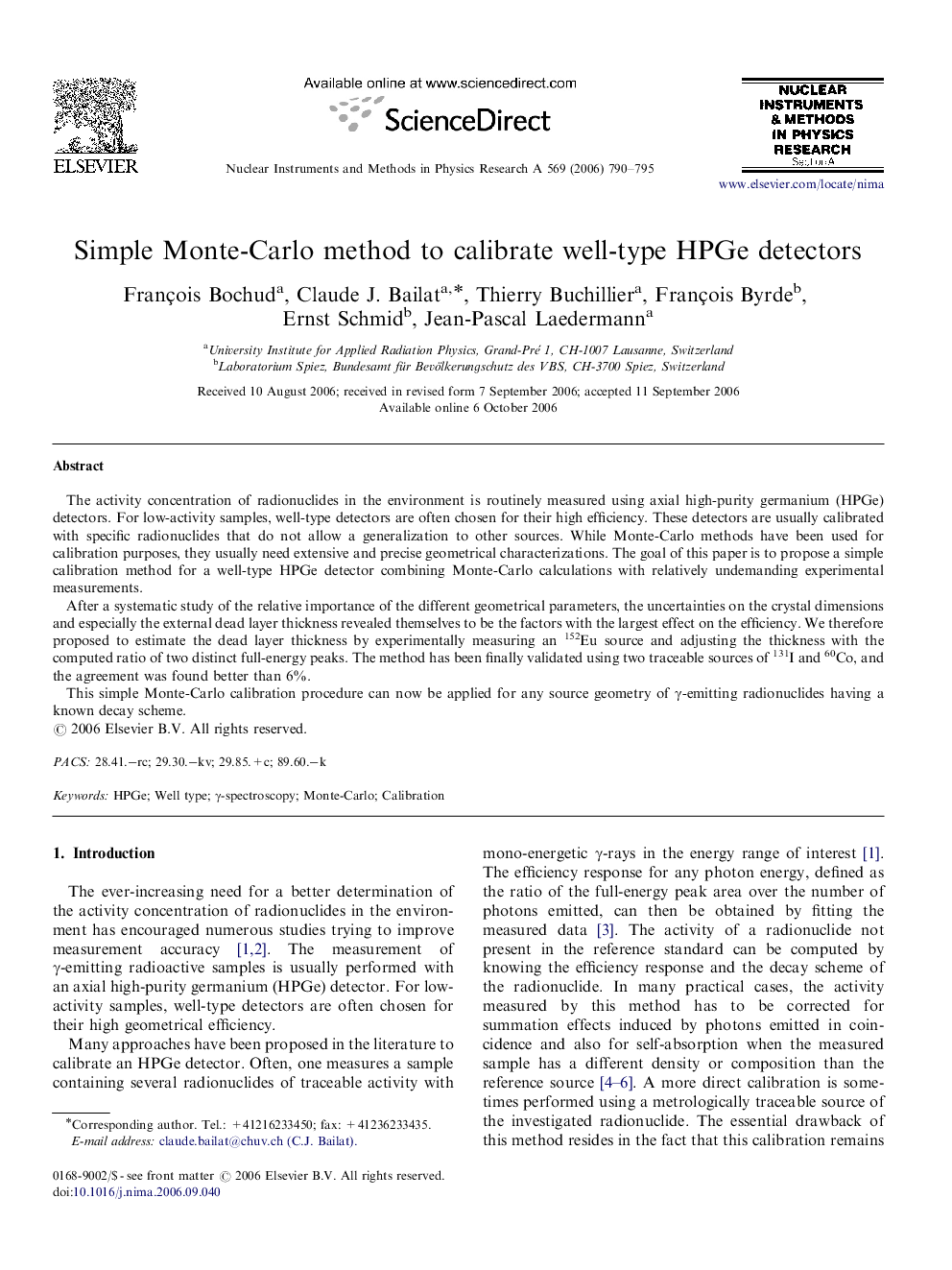| Article ID | Journal | Published Year | Pages | File Type |
|---|---|---|---|---|
| 1831960 | Nuclear Instruments and Methods in Physics Research Section A: Accelerators, Spectrometers, Detectors and Associated Equipment | 2006 | 6 Pages |
The activity concentration of radionuclides in the environment is routinely measured using axial high-purity germanium (HPGe) detectors. For low-activity samples, well-type detectors are often chosen for their high efficiency. These detectors are usually calibrated with specific radionuclides that do not allow a generalization to other sources. While Monte-Carlo methods have been used for calibration purposes, they usually need extensive and precise geometrical characterizations. The goal of this paper is to propose a simple calibration method for a well-type HPGe detector combining Monte-Carlo calculations with relatively undemanding experimental measurements.After a systematic study of the relative importance of the different geometrical parameters, the uncertainties on the crystal dimensions and especially the external dead layer thickness revealed themselves to be the factors with the largest effect on the efficiency. We therefore proposed to estimate the dead layer thickness by experimentally measuring an 152Eu source and adjusting the thickness with the computed ratio of two distinct full-energy peaks. The method has been finally validated using two traceable sources of 131I and 60Co, and the agreement was found better than 6%.This simple Monte-Carlo calibration procedure can now be applied for any source geometry of γ-emitting radionuclides having a known decay scheme.
